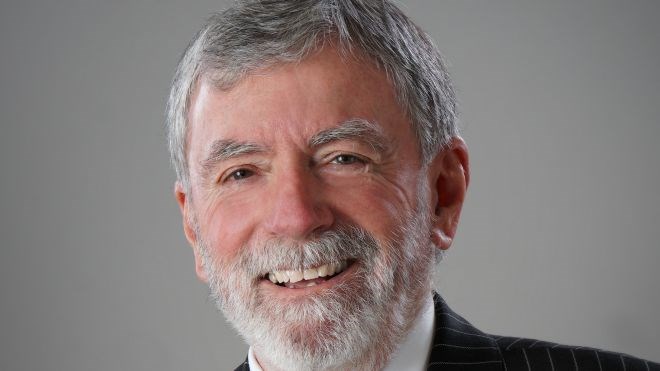It was 1977. The price of nickel was in the tank. INCO was warning about massive layoffs, and speculation about negotiations between the United Steelworkers union and INCO was that there would be no way to avoid a strike. Financial analysts thought it would be a gift to INCO to go on strike because the price of nickel was so low and the stockpiles so high. The union didn’t go quietly. They embarked on one of the toughest and longest labour strikes in Canadian history. It was brutal. Sudbury suffered enormously. It was never the same.
The year before the strike of ’78, a group of community leaders, anticipating the brutal layoffs, began meeting informally about what could be done.
They called the gathering ‘Sudbury 2001.’ The group included Elmer McVey, the chair of the Sudbury and District Labour Council; the chair of the Chamber of Commerce; the presidents of the two major labour unions; senior executives of INCO and Falconbridge; the local MPPs and MPs; the presidents of Laurentian University and Cambrian College; then-mayor Jim Gordon; Doug Frith, chair of the Regional Municipality of Sudbury; Narasim Katary, the head of long-range planning for the region; and myself. The only promise was to leave our politics at the door.
It was a talented group. Jim Gordon would become the provincial minister of government services. Doug Frith would go on to become federal minister of Indian affairs and northern development, Floyd Laughren would become the finance minister for the province of Ontario, and Narasim Katary would move on to become a member of the Ontario Municipal Board.
Although there were many outcomes and hundreds of people involved in individual projects associated with Sudbury 2001, the most important outcome was a change in culture. The most tangible big idea was the regreening of Sudbury. It has been an extraordinary success and recognized around the world.
All levels of government, the university in particular, and all manner of volunteers had their fingerprints on this enormously successful program.
As with most change, the most obvious – say, planting 10 million trees over 40 years – is the least important. The real value is that Sudbury took control of its future and changed how it did business with the world.
One small green shoot of that cultural transformation is the McEwen School of Architecture in downtown Sudbury. It is the first new school of architecture in Canada in 40 years and it was willed into existence by a community group no less persistent than its predecessors. The city put up $10 million to help get it downtown. It is a centre of creative thinking on design and potentially on the cusp of propelling the city into a leadership position in what is called regenerative design.
When all hell broke loose in 1978, Jason McLennan was five years old. Ten years later, he was one of the thousands of schoolkids who worked in the fields of Greater Sudbury reclaiming its soul. It was transformational for him. Like those well-known politicians who went on to bigger and better things, Jason has upped the ante.
Currently living near Seattle, Wash., Jason is a man on a mission. He develops sustainable design solutions around the world. He is considered one of the most influential advocates in the field of architecture and green planning on the planet.
Of course, there are lots of successful former Sudburians around the world, from Anthony Cimino, the artistic director of the Stratford Festival, to David Johnson, our past governor general. The difference is that this ex-pat is on the advisory board of the school of architecture and is enthusiastic about helping Sudbury become an international centre for regenerative design.
Sudbury is due for some fresh thinking.
No one believed for a second Sudbury could reduce its lake pollution by 97 per cent, transform its landscape beyond recognition for the better, and create a world-class mining equipment cluster from the detritus of despair.



